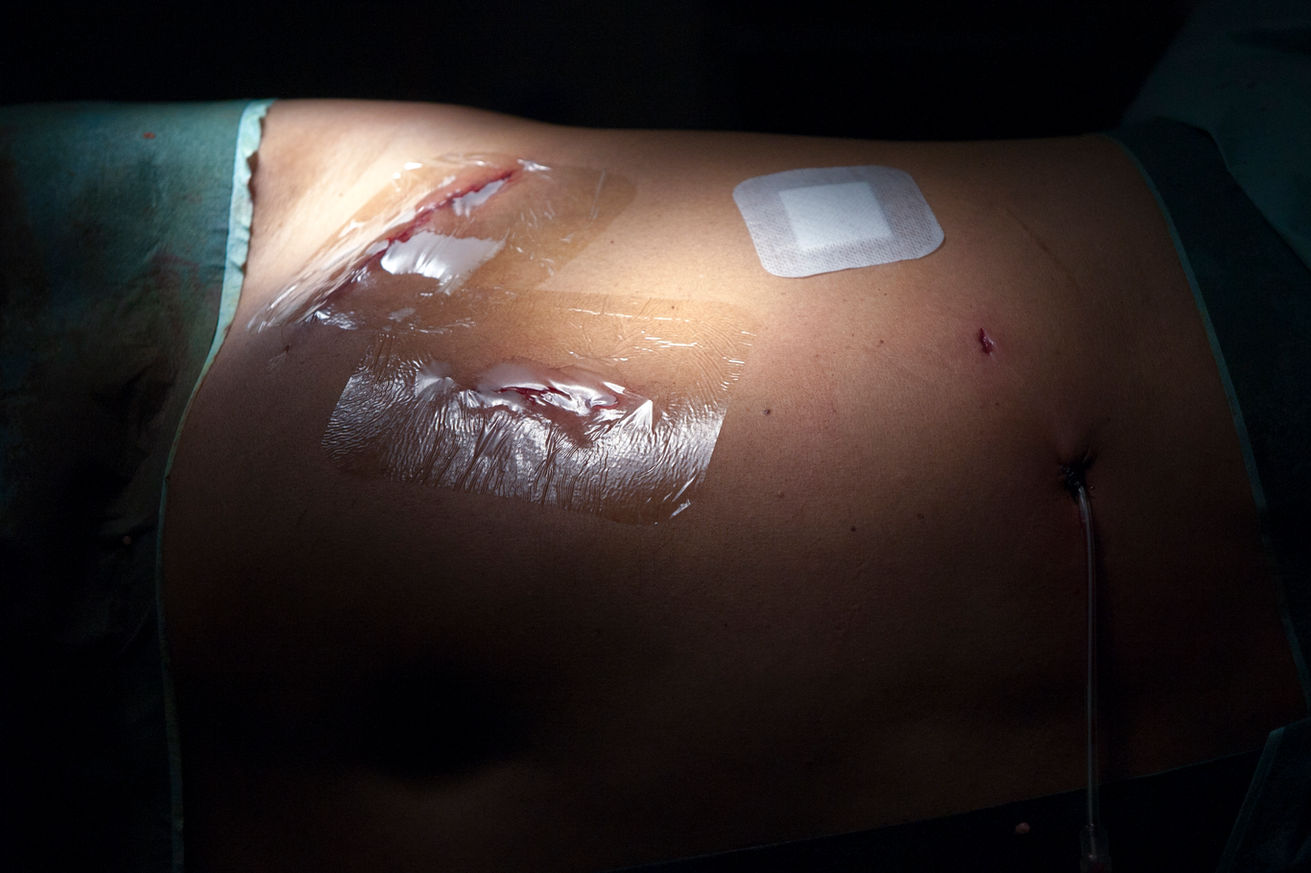
At the end of December 1952, Marius Renard, a young carpenter of 16 years old, fell from a scaffold. He was born with only one kidney. A violent hemorrhage forced his surgeon to remove the other one. Dialysis does not exist yet. Marius is promised to a certain death. His mother, Gilberte Renard, begs the doctors and surgeons of the Necker Hospital to give him one of his kidneys.
A la fin du mois de décembre 1952, Marius Renard, un jeune charpentier de 16 ans tombe d’un échaffaudage. Il est né avec un seul rein. Une violente hémorragie contraint son chirurgien de lui retirer l’autre. La dialyse n’existe pas encore. Marius est promis à une mort certaine. Sa mère, Gilberte Renard supplie les médecins et chirurgiens de l’hôpital Necker de lui donner un de ses reins.
🇫🇷 FRANCE ⎜PARIS ⎜ MEDECINE
REBIRTHS
STORY ⎮ SÉBASTIEN DI SILVESTRO ⎮ HANS LUCAS
At the end of December 1952, Marius Renard, a young carpenter of 16 years old, fell from a scaffold. He was born with only one kidney. A violent hemorrhage forced his surgeon to remove the other one. Dialysis does not exist yet. Marius is promised to a certain death. His mother, Gilberte Renard, begs the doctors and surgeons of the Necker Hospital to give him one of his kidneys. We have two lungs, two kidneys. And medicine knows that one can live with only one. However, the transplant was never performed. Jean Hamburger and his team decided to attempt this last chance operation on Christmas night. With a surgical technique still used today. Against all odds, the operation was a success. The kidney takes and Marius recovers his strength. The whole of France dedicates its front pages to "The Great Battle of Medicine at the Necker Hospital". The state of health of Marius and his "Mother Courage of Humanity" is followed by all the daily newspapers. But in mid-January 1953, Marius' kidney suddenly stopped functioning. At the time, nothing was known about immunology or anti-rejection treatments. One hundred and eleven proposals for anonymous donations poured in spontaneously from all over the country to replace the maternal kidney. Living donation was born. From the strength of conviction of a single woman. Of a mother.
Marius Renard died on January 28, 1953. 5000 people attended his funeral. The trauma is shared by the medical team of the Necker Hospital who will wait 6 years before repeating the experience. The unsuccessful attempt to save Marius had nevertheless opened the era of transplantation. In all its forms. And in the whole world.
60 years later, Max-André Babet, 51, decided to give a kidney to his son David, 29. With approximately 3,500 kidney transplants per year in France, the gesture is no longer strictly a medical adventure. But it has never become a trivial matter. It is a long journey of care, of law, of ethics, of difficult questions for the donor, the recipient in mirror and facing themselves, as well as for the medical teams. But when the biological tissues are welded together, the cord that chained survival to the machine is cut. Literally, a rebirth.
Editor's note: some of the images in this report on a human and medical adventure are likely to offend the senses. It documents a transplant journey from beginning to end by following a family and a donor-recipient duo who have agreed to symbolically embody this 60th anniversary.
A la fin du mois de décembre 1952, Marius Renard, un jeune charpentier de 16 ans tombe d’un échaffaudage. Il est né avec un seul rein. Une violente hémorragie contraint son chirurgien de lui retirer l’autre. La dialyse n’existe pas encore. Marius est promis à une mort certaine. Sa mère, Gilberte Renard supplie les médecins et chirurgiens de l’hôpital Necker de lui donner un de ses reins. On a bien deux poumons, deux reins. Et la médecine sait qu’on peut vivre avec un seul. Cependant la transplantation n’a jamais été pratiquée. Jean Hamburger et son équipe décident de tenter cette opération de la dernière chance, la nuit de Noël. Avec une technique chirurgicale encore utilisée aujourd’hui. Contre toute attente, l’opération est un succès. Le rein prend et Marius recouvre ses forces. La France entière dédie ses Unes à «La Grande Bataille de la médecine à l’hôpital Necker». L’état de santé de Marius et de sa «Mère courage de l’humanité», est suivi par tous les quotidiens. Mais à la mi-janvier 1953, le rein de Marius cesse brutalement de fonctionner. On ne connaissait alors rien de l’immunologie, ni des traitements anti-rejets. Cent onze propositions de dons d’anonymes affluent spontanément de tout le territoire pour remplacer le rein maternel. Le don vivant venaît de naître. De la force de conviction d’une seule femme. D’une mère.
Marius Renard, décède le 28 janvier 1953. 5000 personnes assisteront à ses obsèques. Le traumatisme est partagé par l’équipe médicale de l’hôpital Necker qui attendra 6 années avant de réitérer l’expérience. La tentative infructueuse pour sauver Marius avait néanmoins ouvert l’ère de la transplantation. Sous toutes ses formes. Et dans le monde entier.
60 ans plus tard, Max-André Babet, 51 ans, prend la décision de donner un rein à son fils David, 29 ans. Avec environ 3500 greffes rénales par an en France, le geste ne relève plus de la stricte aventure médicale. Sans jamais être devenu anodin. C’est un long parcours de soins, de droit, d’éthique, de questions difficiles pour le donneur, le receveur en miroir et face à eux-mêmes, comme pour les équipes médicales. Mais quand les tissus biologiques se soudent, le cordon qui enchainait la survie à la machine se coupe. Littéralement, une renaissance.
NDLR : certaines images de ce reportage sur une aventure humaine et médicale sont susceptibles de heurter la sensibilité. Il documente un parcours de greffe de bout en bout en suivant une famille et un duo donneur-receveur qui ont accepté d'incarner symboliquement ce 60ème anniversaire.
























